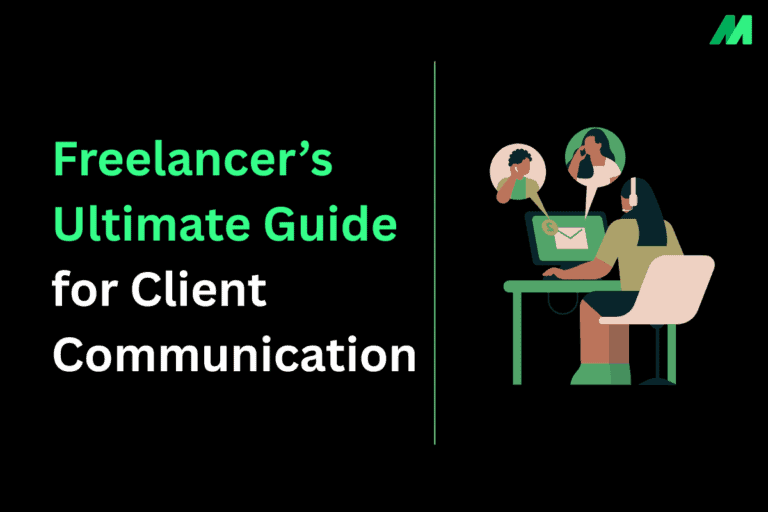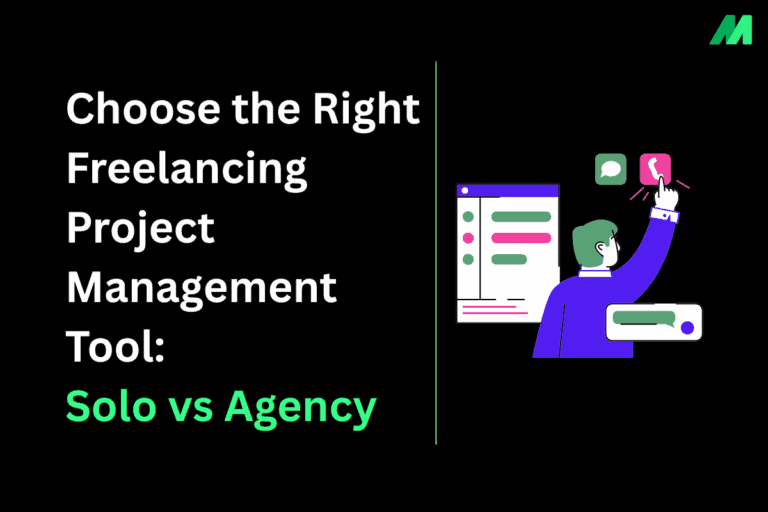Freelancer portfolios are not only a collection of work samples but also your most powerful marketing tool, often your first impression with a prospective client. Too many freelancers accidentally glut their employment opportunities via a few common portfolio faux pas that cause clients to bounce before they can even have a conversation. This guide will expose those faux pas and offer straightforward solutions so your freelance portfolio can help you attract clients instead of limit your opportunities.
Freelance Portfolio Mistakes to Avoid That Cost You Clients (and How to Fix Them)
Here is a table summarizing the freelance portfolio mistakes (problems) and their corresponding solutions:
| Problem | Solution |
| 1. No clear target audience | Define your ideal client and tailor your portfolio to them. |
| 2. Too many projects showcased | Show only your best 10-15 relevant projects. |
| 3. Contact info missing or hard to find | Place clear, clickable contact info on every page. |
| 4. No project context or role explanation | Add brief case studies explaining your role and results. |
| 5. Cluttered design and poor navigation | Use a clean, consistent design with easy navigation. |
| 6. Confusing, agency-like messaging | Use first-person, highlight your individual expertise. |
| 7. No SEO optimization | Use relevant keywords naturally in titles, texts, and tags. |
| 8. Walls of text without breaks | Break content into short paragraphs, bullets, and visuals. |
| 9. Missing personal touch and testimonials | Add bio with photo and show client testimonials. |
| 10. Not mobile-friendly or regularly updated | Make portfolio mobile-responsive and update frequently. |
1. Not Defining a Clear Goal or Target Audience
There are many freelancers who aggregate portfolios without any real thought to their target audience. The result is a unfocused portfolio that aims to cover all areas and speak to everyone but ultimately speaks to no one. Prospective clients are looking for relevant work and language that addresses their needs and industry directly.
How to fix this: Spend time by researching an ideal client profile. Choose a niche/specialty that references your skillset and target market, then tailor the portfolio content, visuals, and messaging based on that profile.
Example phrasing:
“I help SaaS startups grow user engagement through intuitive UX design.”
“Web developer specializing in custom WordPress sites for health and wellness businesses.”
2. Overloading Your Portfolio with Too Much Work
It might be working to show all of your work, but overwhelming visitors can bury your best work with lots of not-so-relevant or out-of-date examples. Clients are typically fast decision-makers, and they usually prefer a selected collection of strong and relevant projects – not an archive of everything you ever did.
How to fix: Select 10-15 of your best and most recent work. You can categorize, and/or filter your portfolio if you have more than two skills, but your presentation should be simple and deliberate.
Example phrasing:
“Selected Projects: Branding and identity designs for consumer tech brands.”
“Top Web Development Projects with e-commerce and responsive design.”
3. Missing or Hard-to-Find Contact Information
Once a client decides to reach out, if you make it difficult or confusing for them to get in touch, they will not bother to figure it out and they will lose interest & move on to other freelancers.
How to fix this: Your contact information should be clearly located on each of your pages (preferably in the header and the footer and in a dedicated “Contact” area). Consistently use clickable email and phone links and possibly a contact form for convenience.
Example phrasing:
“Want to work together? Email me at hello@yourname.com or book a free consultation through my contact page.”
4. Lack of Role Clarity and Context in Project Presentation
Many portfolios will only show their final visuals without detail about what you did, what challenges you faced, or how the work impacted the client. By doing this, it leaves the client only guessing what you were really doing and worth and devalues your contribution and problem-solving ability.
How can we fix this: Include short case studies of selected projects that include a brief description of the problem, what your role was in the project, the solution you implemented, and any quantitative or qualitative results of the project. If you have the early sketches or revisions then include those as well to show your process.
Example phrasing:
“Role: Lead UX Designer for a health app that reduced user onboarding time by 35%. My task was to redesign the registration flow to improve completion rates.”
5. Poor Visual Design and Difficult Navigation
A messy, mismatched, or unattractive portfolio really hurts your professional image and annoys your visitors to the point where they don’t stick around for long. Unacceptable user issues, from slow loading and small images to confusing navigational structures can take away from the experience.
Solution: Use a clean, simple design with consistently used fonts and colors. Optimize images for fast loading. Make navigation clear and intuitive and be sure to clearly label everything. Test your site on both a desktop and mobile.
Example phrasing:
“Clean, responsive design optimized for both desktop and mobile devices, providing an effortless browsing experience.”
6. Confusing or Agency-Like Messaging
Countless freelancers have their portfolios look like agency websites, implying there’s a team instead of a single individual doing freelance work which confuses clients who are looking to hire a particular expert and build a relationship with them.
How to combat this: Use first person language and communicate that you’re an individual freelancer. Display your core skills and niche to distinguish yourself. Eliminate all vague promises and jargon.
Example phrasing:
“I’m a freelance graphic designer specializing in logos and brand identity for small businesses.”
“I’m a freelance copywriter specializing in storytelling and website content for wellness brands.”
7. Ignoring SEO Best Practices for Portfolio Visibility
Regardless of how great your portfolio might be, it won’t be beneficial if prospective clients can’t find it. If you publish a portfolio and don’t use SEO, you will be limiting organic traffic.
How to solve this: Research industry keywords clients might use to find your services. Use those keywords in your website’s titles, project descriptions, image alt text, and metadata. This will help improve search rankings.
Example phrasing:
“Freelance digital marketer with expertise in SEO and PPC campaigns for e-commerce brands.”
“Freelance graphic designer in Bangalore offering branding and logo design services.”
8. Text-Heavy Portfolio Pages Without Scannability
Large sections of uninterrupted text dissuade visitors that often skim the text, particularly on portfolios because the visitor usually just wants to get a quick sense of your work and results.
How to fix it: Break content into short paragraphs, use bullet points, subheadings, images and highlights that are easy to skim and won’t overwhelm the visitor and also invites them to read more in depth about your work.
Example phrasing:
“Services Offered:
- UX research and prototyping
- User interface design
- Usability testing and analytics
Or
- Social media content creation
- Blog writing and SEO optimization
- Email marketing campaigns”
9. Missing Personal Touch and Client Testimonials
A portfolio without a personable “About Me” section and social proof is often cold and less trustworthy, decreasing the client’s likelihood of confident hiring.
How to fix: A warm, well written bio about who you are and your approach, and testimonials or reviews by clients, that speak to your professionalism and results.
Example phrasing:
“Hi, I’m Ananya, a passionate freelance copywriter dedicated to crafting compelling brand stories.”
Client testimonial: “Ananya’s work helped skyrocket our newsletter open rates by 35%. Highly recommended!”
10. Ignoring Mobile Optimization and Portfolio Updates
Given the majority of web traffic comes from mobile devices, unimpressive websites and portfolios will immediately lose potential clients. Similarly, a stale portfolio makes it seem like you haven’t been busy, or worse, you have not grown as a photographer.
What is the solution: Make sure your portfolio is entirely responsive and looks great on phones and tablets. Update your portfolio at least every year to include new projects, and discard old ones, in order to make sure your profile is on point.
Example phrasing:
“Recent Work: Mobile app redesign increasing user engagement by 30% within three months.”
A strategic, thoughtful freelance portfolio is a vital asset in winning clients. Here are some common mistakes to avoid, and aspects to keep in mind when updating your portfolio regularly with sharpened focus, clear messaging, ample evidence of the impact of your work and testimonials from clients. You will build trust and open the door to many excellent paying freelance projects.




